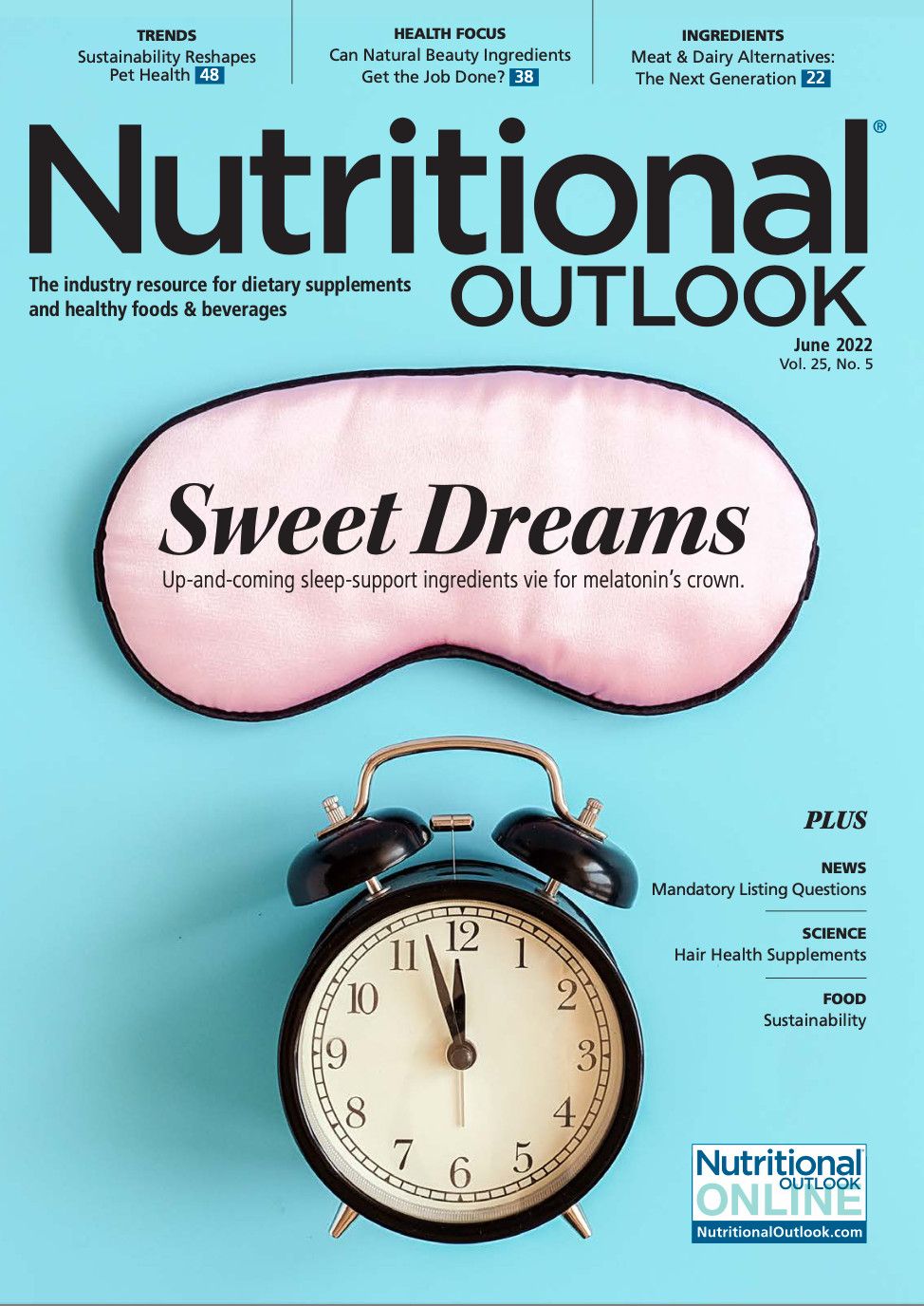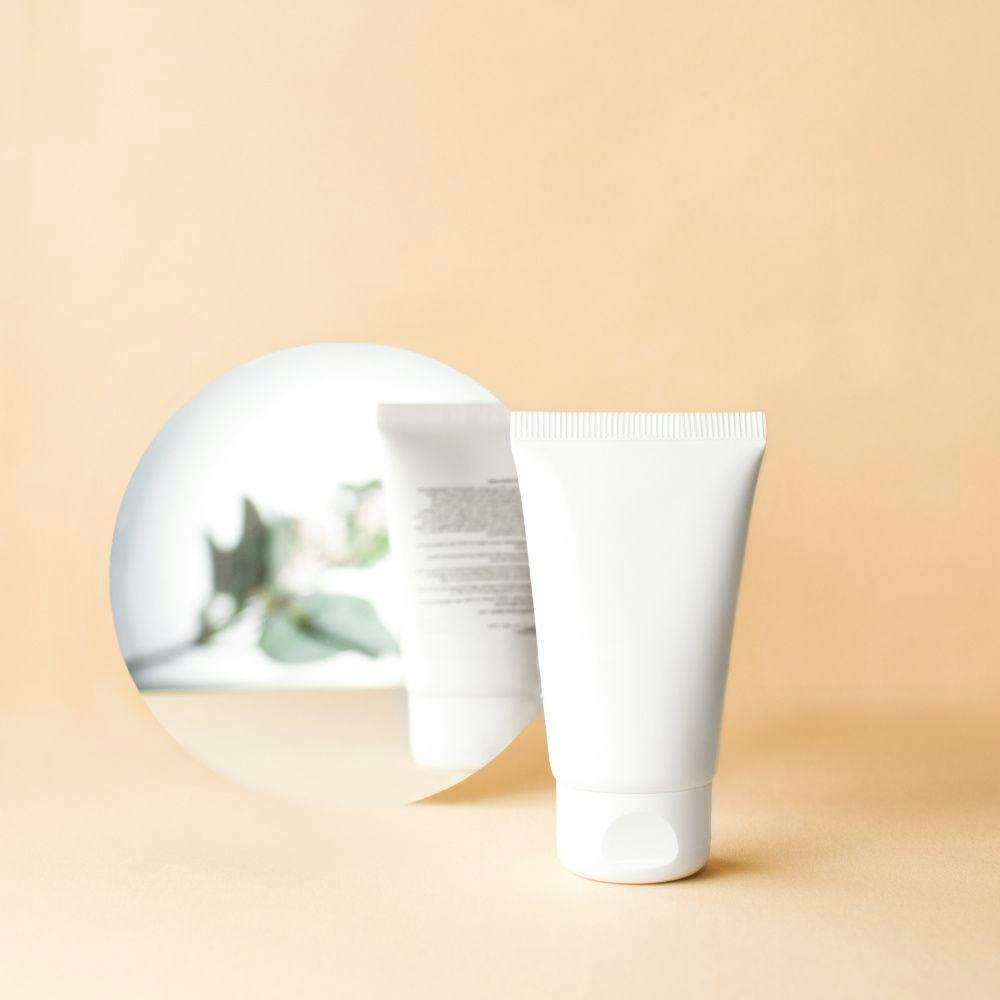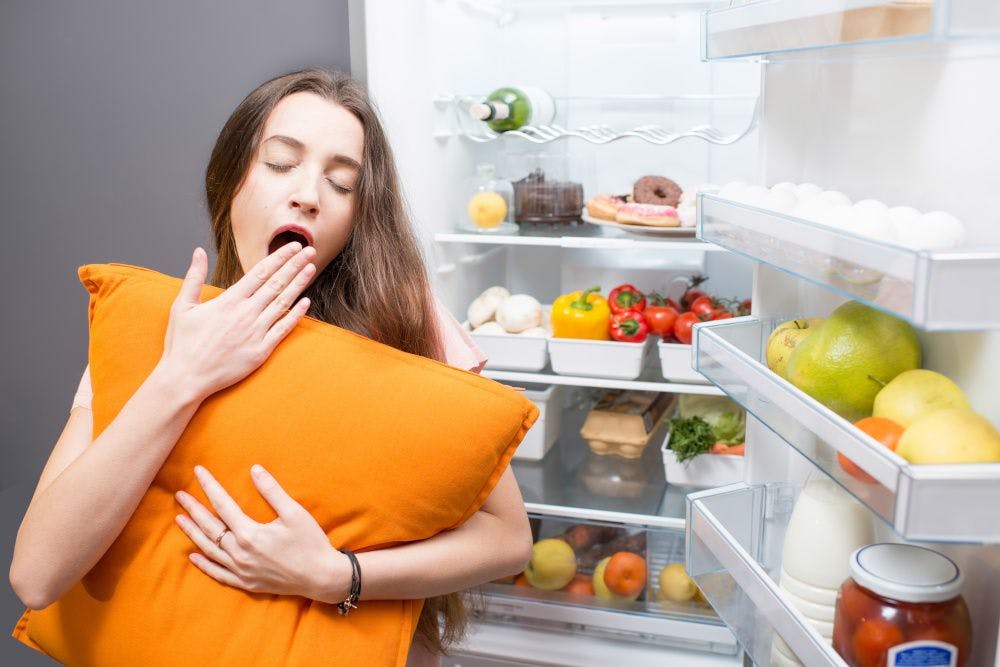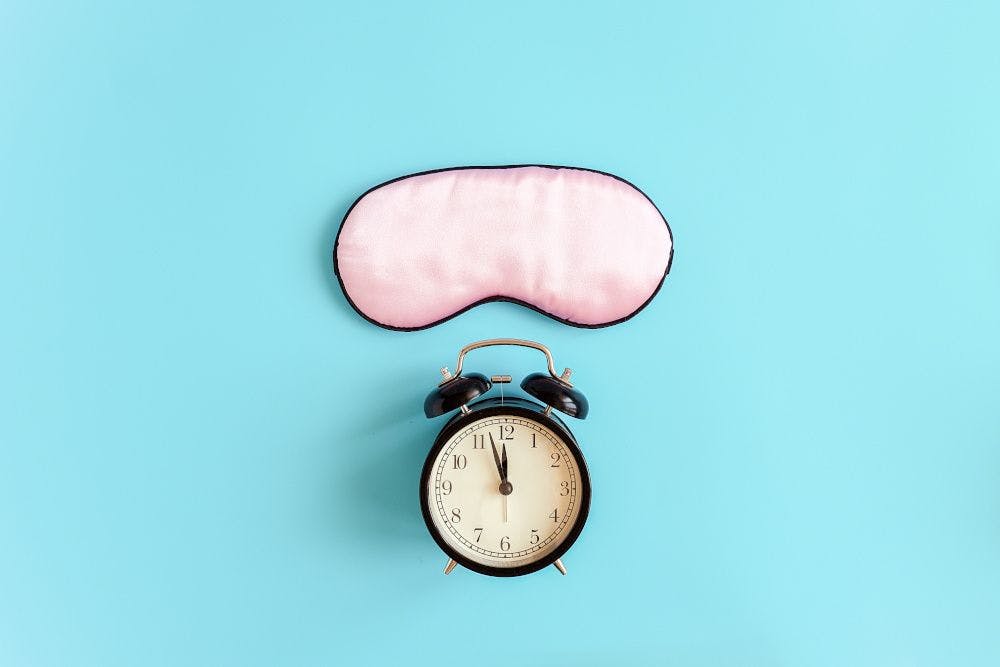Challenging the leader: Sleep-support up-and-comers prove melatonin isn’t the only game in town
Many other actives are generating both the science to support their effectiveness and the consumer interest to raise them up the ranks.
Photo © Irina - Stock.adobe.com
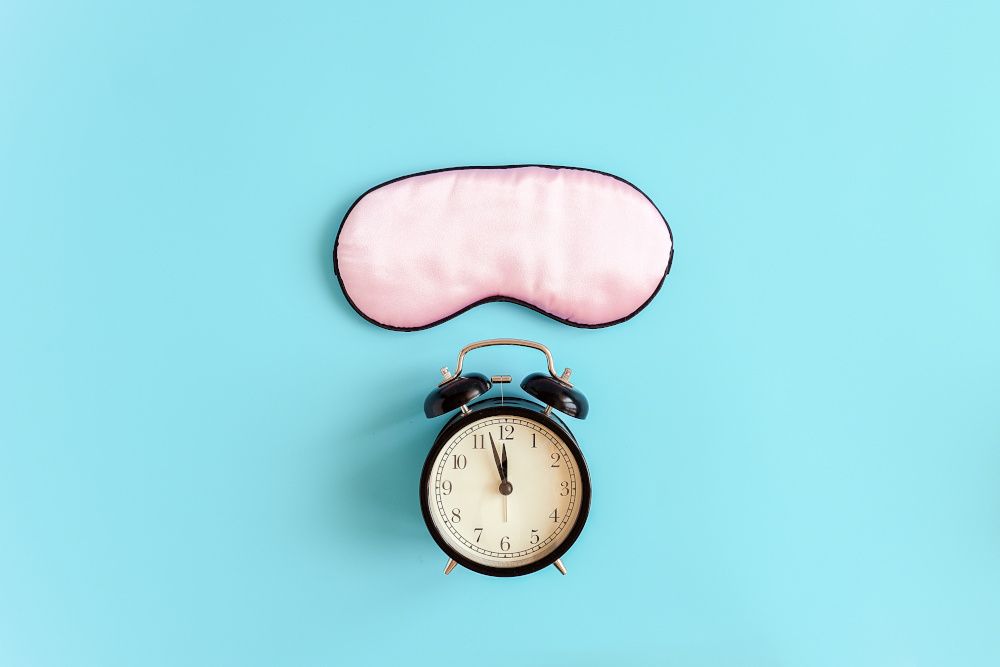
If the supplement industry were a high school, the sleep-support space might just be the coolest lunch table on the quad. With its global value (including supplement and other products) projected to hit $118 billion by 2030 on compound annual growth of 7.1%1, there’s no doubt the sleep-aids market is in contention to win the supplement popularity contest, too.
And presiding over it all is melatonin, which saw its own sales skyrocket 31% last year in the U.S. sleep supplement ingredients market alone, according to SPINS.2
But as in any clique, hierarchies are fluid even among sleep-support ingredients, and though melatonin may be the big man on campus now, 1) it has its limits, and 2) many other actives are generating both the science to support their effectiveness and the consumer interest to raise them up the ranks.
All of which suggests that while “Most Popular” may be a coveted title to seek, more advantageous in the long run is “Most Likely to Succeed.”
Rise to the Top
Achieving success is no easy feat for any sleep-support supplement, opines Wilson Lau, CEO of NuTraditions and president of Nuherbs (San Leandro, CA). “That’s the thing with sleep supplements,” he says: “The person taking it knows absolutely if it works—or doesn’t.”
And for many, melatonin does.
As Susan Hazels Mitmesser, PhD, vice president, science and technology, Pharmavite (West Hills, CA), explains, “Melatonin rose to the top, firstly, because one in three Americans aged 18 to 60 do not achieve the recommended seven to nine hours of sleep per night—highlighting the need for consumer sleep aids.”
Beyond that, she says, melatonin is quite simply effective. “Melatonin helps you fall asleep faster, stay asleep longer, and improve your sleep quality,” Hazels Mitmesser notes. It’s also affordable, largely accessible without prescription, and graced with a strong safety profile compared to many pharmaceutical sleep aids—“meaning fewer side effects, including dependency,” she adds.
The Sleep Hormone
Which almost makes it sound like a wonder drug.
But melatonin is actually an endogenous hormone that “governs the circadian rhythm of day-night physiological cycles involved in sleep and wakefulness,” says Brien Quirk, director of R&D, Draco Natural Products (San Jose, CA). “It helps create deeper stage-2—non-REM, or rapid-eye-movement, sleep—and less awakening in the night, which we know are both vital to being refreshed.”3
Perhaps that’s why it’s often referred to as “the ‘sleep hormone,’” adds David Foreman, RPh, ND, founder and president, Herbal Pharmacist (Oceanside, CA). “The pineal gland in the brain is its source,” he continues, “and the body generates it naturally after sundown and stops at daylight.”
Research shows that the mechanisms behind melatonin’s sleep effects involve acetylation by serotonin N-acetyltransferase (NAT) enzymes in the pineal gland, ultimately resulting in a downstream set of “hypnotic bioprecursor molecules known as acetyl metabolites,”4 Quirk says.
Whatever the mechanism, the fun doesn’t last forever, as melatonin production declines with age. Even prior to that, forces such as bright light (think screens), alcohol, and more interfere with the pineal gland’s ability to produce it. As such, Quirk reckons, “Supplementation is known to have many beneficial effects” that go beyond a good night’s sleep.
Unintended Consequences
But supplementation has its drawbacks, too.
On the plus side, “You’re unlikely to become dependent on melatonin, see a diminished response after repeated use, or experience a hangover-like effect,” concedes Maggie McNamara, marketing director, Gencor (Irvine, CA). Yet even though short-term use appears to be safe for most adults, she concedes, “There’s not enough information available fully to judge safety of long-term use.”
Among the side effects melatonin users report, headache is the most common, with dizziness, stomach cramps and nausea, confusion, depression, irritability, anxiety, and even low blood pressure some others. “And melatonin needs to be taken at the lowest effective dose,” McNamara cautions, “as you can definitely take too much.”
Hazels Mitmesser notes that some users report vivid dreams, thanks to a phenomenon called REM rebound. Because REM sleep is the phase in which we dream, “When people don’t get enough REM sleep and use a sleep aid, their REM-sleep duration rebounds and overcompensates,” she explains, “producing a longer period in which dreams can occur.”
And Jim Roza, chief scientific officer, Layn Natural Ingredients (Irvine, CA), argues that while melatonin can hasten sleep onset, it doesn’t do much to prevent repeated awakenings, optimize time spent in key sleep phases, or contribute to a truly refreshed feeling upon waking. “So while melatonin acts as an excellent sleep facilitator,” he wagers, “it doesn’t ensure good sleep quality, which is essential for overall health and wellbeing.”
McNamara even raises red flags about how much melatonin winds up in over-the-counter products. Investigations have shown melatonin levels exceeding labeled amounts by up to 478% in some preparations, she says, while also revealing the presence of other substances, like the neurotransmitter and melatonin-precursor serotonin, that “may further contribute to side effects.”5
No wonder, then, that “melatonin is a drug in my book,” Foreman declares. “Supporting the body’s own production or taking natural sources would be advisable as a more ‘natural’ approach to sleep.”
Indeed, adds Jonathan Jones, PhD, chief scientific officer, Monteloeder (Miami, FL), “We mustn’t forget that melatonin supplements are generally produced synthetically, whereas consumers are looking for more natural solutions in all health categories. So while melatonin may still dominate, there’s rising interest in other more natural solutions, which may give similar results but without side effects.”
Stress Less
This opens the door to botanical and adaptogenic alternatives, Jones proposes, adding that “these plants have been widely used traditionally for centuries, and now science is demonstrating their efficacy and specific use.”
Roza agrees, pointing to “growing awareness” around adaptogens’ balancing effects on stress and, by extension, their benefits on sleep. “Consumers are turning to these time-tested botanicals to help keep moods in check,” he says, “and thereby support quality sleep.”
Schisandra is one such adaptogen with “a long history of supporting healthy mood,” Roza says. Holy basil, or tulsi, is another, which appears to promote a healthy stress response to improve anxiety symptoms. And while cortisol levels normally rise toward waking and fall as we approach sleep, Roza explains, elevated evening levels are all too common in our modern era and can be addressed with rhodiola root extract, which he says has a demonstrated ability to lower cortisol levels and provide for “a more restful and restorative sleep.”
McNamara notes that Gencor’s standardized saffron ingredient—branded Affron—“has multiple mechanisms of action for stress,” with a recent study showing that it increases the body’s natural production of melatonin.6 In another clinical trial, Affron aided sleep at a dose of just 14 mg taken one hour prior to rest, with doses up to 28 mg also providing benefit.7
GABA GABA Hey
Some botanicals appear to act on receptors that bind GABA, the brain’s major inhibitory neurotransmitter, thus reducing neuronal firing and calming the mind.
For example, Roza mentions animal models indicating that magnolol, an active found in the bark of the magnolia tree, at a dose of 5 or 25 mg/kg helps to induce sleep via GABA(A) receptors.8 And L-theanine, an amino acid found in green tea, also naturally boosts GABA levels, “which has a calmative effect on the brain and enhances sedative alpha brainwaves,” he says.
Jones notes that lemon verbena (Lippia citriodora) also binds GABA(A) receptors, and specifically at the same site as do benzodiazepines, thus increasing GABA sensitivity and providing “a similar benefit to taking sleep-enhancing medication, but without the side effects and known dependency,” he says.
One recent study involving Monteloeder’s lemon verbena extract purified in verbascoside—branded Relaxplx—found significant reductions in the number of nighttime waking episodes and significant increases in deep and REM sleep in participants taking the supplement compared to placebo9—“all indicators of better sleep quality,” Jones adds. And a further study showed that lemon verbena even increases serotonin, noradrenaline/norepinephrine, and dopamine.10
The lesson Jones takes from the science: “It doesn’t matter if you take a supplement that helps you fall asleep if you’re suffering from anxiety, depression, or another condition that affects sleep. By providing stress release while improving sleep quality, Relaxplx helps give a good night’s sleep to those whose root cause of lack of sleep is stress.”
Complementary Treatments
Another lesson to extract from sleep science: “While melatonin is effective for many sleep issues, we recognize that it doesn’t solve all of them,” Hazels Mitmesser concludes. “Approaching sleep from different receptor systems—as in through melatonin and GABA receptors—is likely to yield greater benefits than single systems alone.”
Foreman is of like mind. “I think that if we use blends of ingredients at their therapeutic doses—each with differing mechanisms of action—we’ll have a winner,” he says. “Combining an ingredient that addresses stress with something that supports natural melatonin production, or even pain, is a good place to start.”
This is where Quirk sees room for elements of Traditional Chinese Medicine (TCM). “The beauty of TCM herbs,” he explains, “is that dozens of centuries of use prove their effectiveness in the time-tested laboratory of herbal medicine. Now they’re also being backed up with pharmacological and clinical studies.”
Case in point: We now know that polygala (family Polygalaceae) helps lower cortisol, while wild jujube seed (Ziziphus jujuba) helps “balance and improve neurotransmitter systems that create a more restful and calm mood for less anxiety, leading to better sleep,” Quirk explains. Combine the two, as researchers did in a recent pharmacological study, and results show that that the pairing can lead to significantly shortened time to sleep onset as well as prolonged sleep duration.11
“In TCM, the mechanism of action for both herbs is thought be related to the heart and liver meridians,”12 Quirk adds, which both influence metabolism and brain activity.
“So given that we know melatonin works mainly by helping to reset disturbances in the timing or synchronization of sleep-wake cycles and that its sedative effect is not very strong,”13 Quirk continues, “these herbs make the perfect complement to melatonin.”
Multitier Approach
Lau would likely agree. In fact, sour jujube date seed is the “hero herb” in NuTraditions’ Calm Down blend, where it “works with the blend’s other components to help address quality of sleep versus just adding hours of sleep,” Lau says—adding that he’s “super-excited” for a clinical trial to commence later this year to validate anecdotal reports about the Calm Down blend that the company’s received from “well-rested customers.”
Taking things a step further, the company’s Hello Dreams formulation combines the Calm Down blend with melatonin, leveraging the latter to help consumers fall asleep and the herbal blend “to help them stay there,” Lau says. “There’s room for a multitier approach to sleep, which is the approach we took here.”
“I’m extremely excited about herbal blends,” Lau concludes. “They bring a more traditional, natural approach to health, wellbeing, and sleep, and can complement each other in so many ways. That makes the options for delivering benefits through skillful formulation compelling.”
Bedtime Bliss
He can say that again. McNamara points to products like Beyond Raw Anabolic Sleep, a formulation that comprises L-theanine, ashwagandha, GABA, melatonin, and Levagen+. “And Sweet Dreamz is a blend of all-natural restful-sleep aids, including Montmorency cherry, chamomile, lemon balm, 5-HTP, and Levagen+, to promote a deep, restorative slumber without the morning grogginess,” she adds.
Just what is Levagen+? It’s the tradename of Gencor’s palmitoylethanolamide (PEA) ingredient, which McNamara says “acts on various receptors involved in regulating pain, mood, and sleep, and indirectly influences the endocannabinoid system, which we know is involved in pain perception, circadian rhythms, and the sleep/wake cycle.”
More specifically, PEA downregulates activity of fatty-acid amide hydrolase (FAAH), an enzyme that metabolizes anandamide—a.k.a. the “bliss molecule” and one of the body’s endogenous cannabinoids. PEA may also activate CB1 and CB2 cannabinoid receptors, McNamara adds, further promoting calm and inducing sleep. And by acting on TRPV1 channels, it appears to bias our bodies toward getting more of the restful, deep sleep that characterizes sleep’s REM phase, she says.
“Findings support PEA as a potential sleeping aid capable of reducing sleep-onset time and improving cognition on waking,” McNamara continues, adding that one study14 found 350 mg of Levagen+ taken before sleep significantly cut sleep-onset time and improved subjects’ cognitive function upon waking—“all without any adverse effects,” she says.
That gives consumers one more option to tap. And considering that “sleep is such a big category, and the factors impacting it are so varied,” Lau adds, options are essential. “Something that works for one person may not work for someone else.”
And this is where he thinks natural-channel retailers have an advantage: “They can talk to consumers, understand where they need help, and guide them towards a product to address that,” he says. “And ultimately, a product that works will get repeat purchase and strong word of mouth. If it doesn’t work, consumers will never buy it again.” Sleep on that.
References
- Polaris Market Research report. “Sleeping Aids Market Share, Size, Trends, Industry Analysis Report, By Product (Mattresses & Pillows, Sleep Laboratories, Medications, Sleep Apnea Devices); By Sleep Disorders; By Region; Segment Forecast, 2022 – 2030.” Published February 2022.
- Grebow J. “Sleep Support Surges in 2022: 2022 Ingredient Trends for Food, Drinks, Dietary Supplements, and Natural Products.” Nutritional Outlook. Published online January 31, 2022.
- Duffy JF et al. “High dose melatonin increases sleep duration during nighttime and daytime sleep episodes in older adults.” Journal of Pineal Research. Published online ahead of print April 18, 2022.
- Fourtillan JB. “Role of melatonin in the induction and maintenance of sleep.” Dialogues in Clinical Neuroscience, vol. 4, no. 4 (December 2002): 395-401
- American Academy of Sleep Medicine press release. “Americans Continue Struggling for a Good Night’s Sleep During the Pandemic.” Posted April 12, 2021.
- Lopresti AL et al. “An investigation into an evening intake of a saffron extract (Affron®) on sleep quality, cortisol, and melatonin concentrations in adults with poor sleep: A randomised, double-blind, placebo-controlled, multi-dose study.” Sleep Medicine. Published online August 11, 2021.
- Lopresti AL et al. “Effects of saffron on sleep quality in healthy adults with self-reported poor sleep: A randomized, double-blind, placebo-controlled trial.” Journal of Clinical Sleep Medicine, vol. 16, no. 6 (June 15, 2020): 937-947
- Chang-Rui C et al. “Magnolol, a major bioactive constituent of the bark of Magnolia officinalis, induces via the benzodiazepine site of GABA(A) receptor in mice.” Neuropharmacology, vol. 63, no. 6 (November 2012): 1191-1199
- Martinez-Rodriguez A et al. “Anxiolytic effect and improved sleep quality in individuals taking Lippia citriodora extract.” Nutrients, vol. 14, no. 1 (January 4, 2022): 218
- Sabti M et al. “Elucidation of the molecular mechanism underlying Lippia citriodora (Lim.)– induced relaxation and anti-depression.” International Journal of Molecular Sciences, vol. 20, no. 14 (July 20, 2019): 3556
- Ren XJ et al. “Sedative and hypnotic effects and transcriptome analysis of Polygala tenuifolia in aged insomnia rats.” Chinese Journal of Integrated Medicine, vol. 26, no. 6 (June 2020): 434-441
- Wang Q et al. “Brief review about compatibility and their pharmacological effects of Chinese material medica as tranquilizer.” Zhongguo Zhong Yao Za Zhi, vol. 32, no. 22 (November 2007): 2342-2346
- Monteleone P et al. “Temporal relationship between melatonin and cortisol responses to nighttime physical stress in humans.” Psychoneuroendocrinology, vol. 17, no. 1 (1992): 81-86
- Rao A et al. “Palmitoylethanolamide for sleep disturbance. A double-blind, randomised, placebo-controlled interventional study.” Sleep Science and Practice. Published online September 10, 2021.
